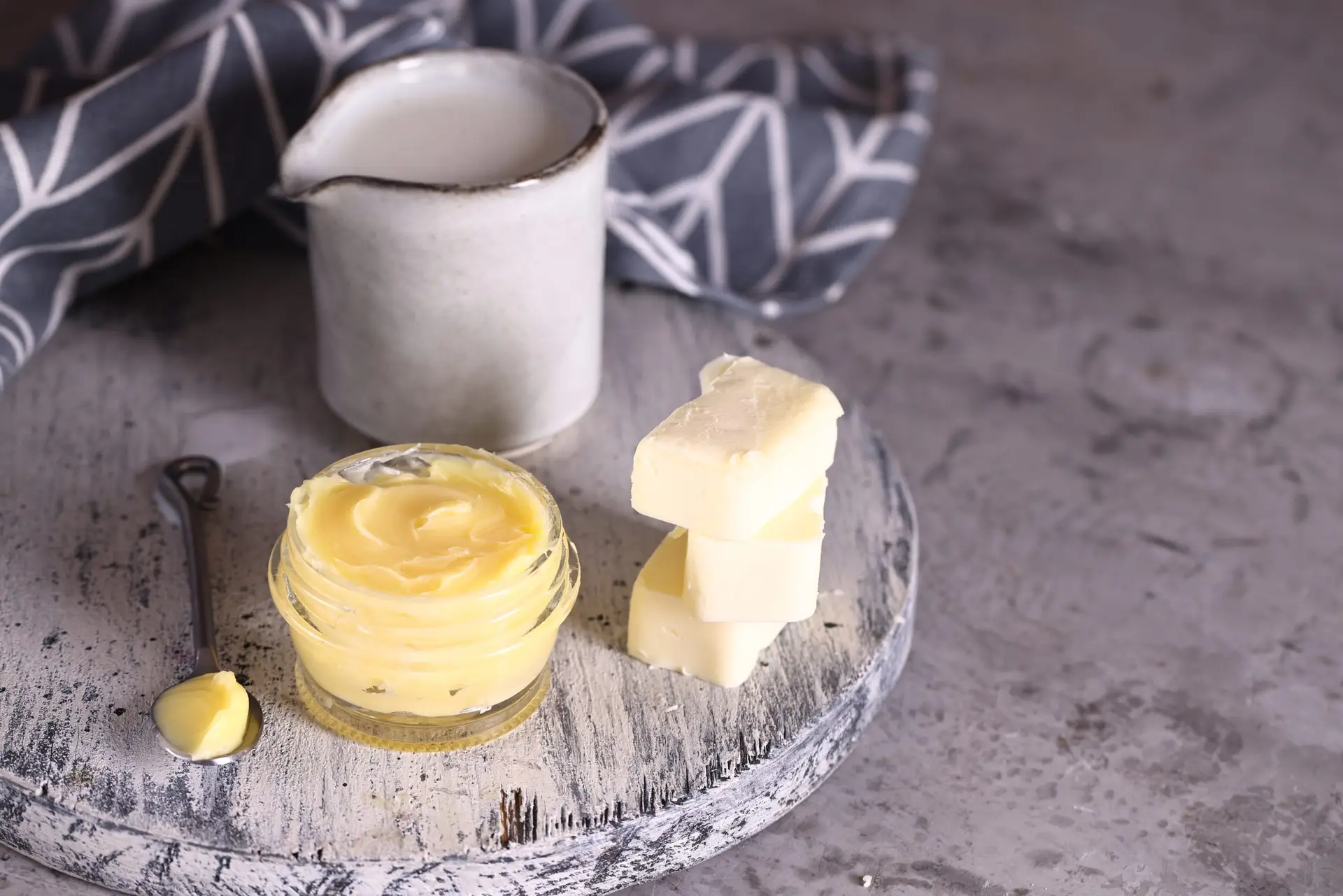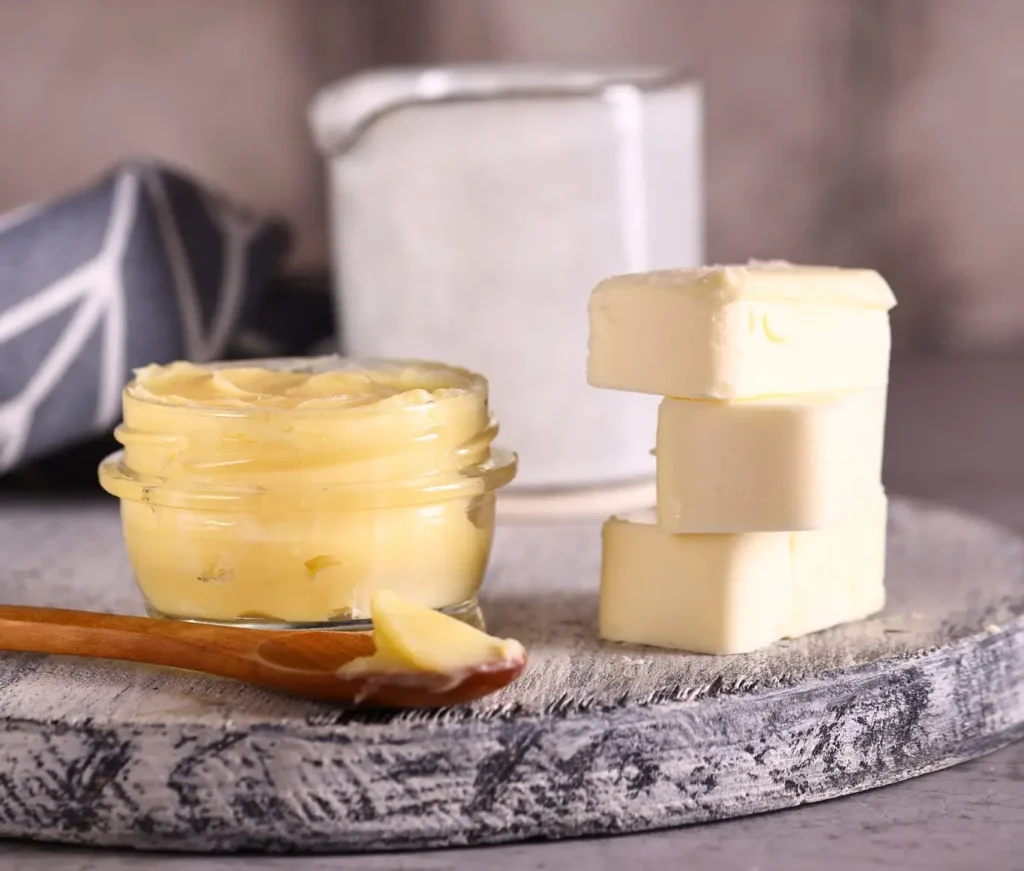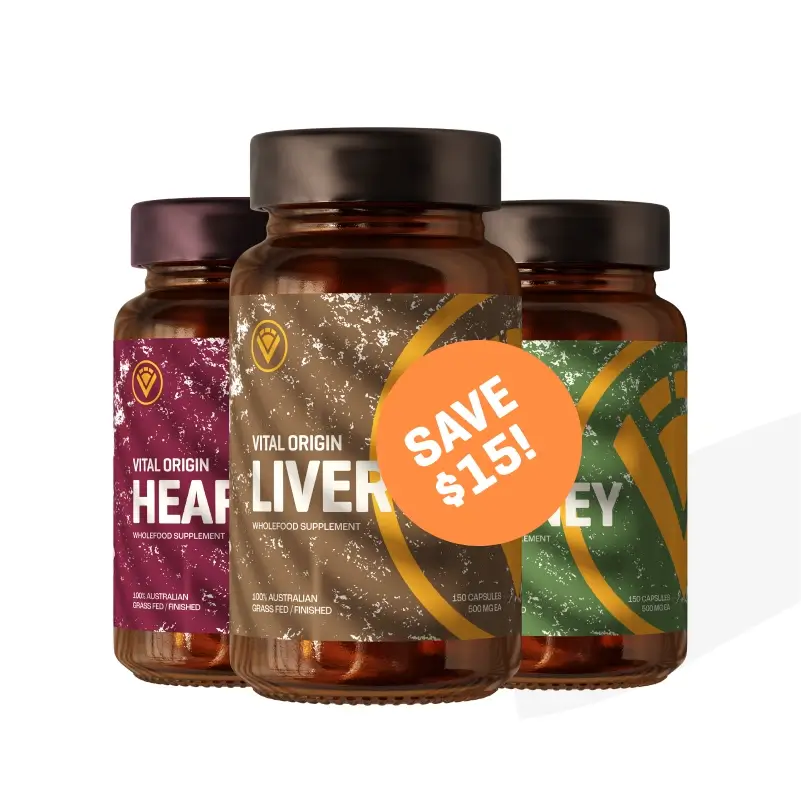

No products in the cart.
Free shipping Australia wide on orders over $80

Did you know the way we eat today is worlds apart from how our ancestors used to fuel their bodies? And we’re not just talking about what’s on the plate, but the very foundation of our meals. Food wasn’t just about convenience or cravings. It was fuel, survival and strength. And the right food meant the difference between just getting by and truly thriving.
Fast-forward to now, and much of that wisdom has been lost. The staples our great-grandparents swore by have been pushed aside in favour of heavily processed oils and convenience foods.
But we’re seeing a shift. More and more people are recognising the benefits of eating the way we were designed to. And that means welcoming back real, whole ingredients, and ancestral fats like beef tallow. Not just for tradition’s sake, but because it works.
At Vital Origin, we’ve seen the benefits of ancestral living first-hand, and we’re passionate about helping others reconnect with the foods that fuelled generations before us. In this post, we’re exploring what the ancestral diet really is, why it’s gaining traction, and the benefits of beef tallow and why it deserves a place back in your kitchen.
While it may sound like a passing food trend, the ancestral diet is actually a return to the eating patterns that shaped human progress. While no single definition can fully capture it, ancestral eating focuses on the foods our bodies evolved to process efficiently, thanks to thousands of generations of natural selection.
Early humans ate what nature provided directly, with diets that varied dramatically based on geography and environment, but shared common, vital principles:
While the agricultural revolution (10,000 years ago) began reshaping human nutrition, it was industrialisation in the last century that most dramatically changed the way we ate.
As societies moved away from complex carbohydrates, fibre-rich plants, and nutrient-dense animal fats toward processed foods loaded with refined sugars and inflammatory seed oils, our connection to food changed forever.
Yes, in many ways, modernisation has made food safer and more affordable, but it has also distanced us from direct food production and ancestral knowledge. Mass-marketed, convenience-focused alternatives replaced time-honoured practices, like rendering beef tallow, that once enhanced nutrient absorption and flavour.
In fact, growing evidence suggests our bodies remain genetically and biochemically aligned with the foods that nourished humanity for millennia.
Chronic inflammatory diseases are on the rise, and more people are starting to connect the dots between what they eat and how they feel. In 2022, over half of Australians lived with at least one chronic health condition, and 22% had two or more. The modern diet is often blamed for triggering inflammation and fuelling these health problems.
Thus, many health-conscious individuals are questioning conventional nutrition advice. The truth is, our genes haven’t changed much in the last 100,000 years. That means our bodies are still hardwired to thrive on the foods our ancestors ate, whole, nutrient-rich, and free from industrial processing.
Research supports this return to ancestral eating, showing that diets based on traditional foods can deliver:
Nose-to-tail eating means eating and using every part of the animal. Instead of discarding organ meats, bone marrow, and animal fats like beef tallow, these nutrient-rich parts were highly valued, often more than the muscle meat itself.
Why? Because nose-to-tail eating provided a perfect nutritional balance that supported robust health. For example, glycine found in connective tissues balances methionine, an amino acid found in muscle meat. This balance helps balance homocysteine levels, a substance in the blood that, when too high, can increase the risk of heart disease.

Modern supermarket shelves are packed with vegetable oils, but for centuries, beef tallow was a staple in kitchens worldwide. This traditional animal fat formed the foundation of countless recipes and is prized for its incredible versatility and nutritional benefits.
Beef tallow is rendered fat from beef, typically taken from suet—the hard fat surrounding a cow’s kidneys and loins. The rendering process involves slowly melting this fat to separate out impurities and water. Traditional methods use low heat and small batches to preserve the natural flavours and nutrients. The result is a smooth, creamy fat that solidifies at room temperature.
The colour of tallow tells you a lot about its origin. It can range from white to yellow depending on the cattle’s diet. Grass-fed cows produce yellower tallow due to carotenoids (natural pigments), while grain-fed cattle yield whiter fat. Grass-fed tallow is often considered more nutrient-dense, delivering nature’s best fats in a convenient form that supports your health and well-being.
Before refrigeration was common, beef tallow’s long shelf life is what made it a kitchen staple. When stored properly in an airtight container at room temperature, it can last up to a year. Keep it in the fridge, and it stays fresh for 12 to 18 months. Freeze it, and you can extend its life to two years or more.
To keep tallow at its best, store it in a cool, dark place away from heat, light, and moisture, these factors speed up spoilage. Glass jars with tight lids or stainless steel containers are ideal storage options.
Industrial seed oils come with various concerns. They are heavily processed with chemical additives and become unstable when heated, producing harmful compounds. The refining process, cleaning, pressing, bleaching, deodorising also strips away nutrients.
On the other hand, beef tallow is a natural, minimally processed fat that remains stable even at high cooking temperatures. It retains valuable fat-soluble vitamins like A, D, E, and K, and provides a balanced profile of healthy saturated and monounsaturated fats. Unlike seed oils, tallow supports the body’s natural biochemistry without promoting inflammation, making it a superior choice for cooking and nutrition for a reason!
Beef tallow is a nutritional powerhouse that played a key role in ancestral diets for good reason.
Beef tallow is a powerhouse source of essential fat-soluble vitamins—A, D, E, and K—that play vital roles in keeping your body healthy. Unlike water-soluble vitamins, these nutrients require dietary fats to be properly absorbed and utilised by your body.
Together, these fat-soluble vitamins work to support your immune system, promote cellular repair, protect against chronic diseases, and maintain overall wellness. Including beef tallow in your diet not only supplies these nutrients but also ensures they are absorbed and utilised effectively.
Tallow contains a balanced mix of fats, about 55% saturated, 40% monounsaturated, and 5% polyunsaturated, that provide the building blocks for hormone production. These fats help your body create important steroid hormones like testosterone and cortisol, which regulate reproductive health and manage stress. Unlike some saturated fats, stearic acid found in beef tallow doesn’t raise cholesterol levels and is found to have anti-inflammatory effects. Plus, grass-fed tallow contains conjugated linoleic acid (CLA), which supports fat metabolism and overall metabolic health.
The fatty acids in beef tallow closely match those in human skin, making it excellent for skin hydration and repair.
Additionally, your brain relies on saturated fats and omega-3s for optimal function, fats that tallow supplies. For digestion, tallow stimulates bile production, aiding fat breakdown and nutrient absorption.
Want to experience the health benefits of beef tallow for yourself? It’s easier than you might think – there are plenty of simple and delicious ways to add this nutrient-rich ancestral fat into your daily routine.
Beef tallow is one of the most versatile fats you can cook with. Thanks to its high smoke point and stable fat profile, it’s ideal for high-heat cooking and adds an incredible depth of flavour to your dishes. Here’s how to start using it:
If you’re new to using tallow, keep these pointers in mind:
You’ve got options when it comes to sourcing beef tallow. Homemade tallow means you have control over the quality and preparation, tailoring it to what you want to use it for.
Learn How To Make Your Own Tallow Here: How to Make Beef Tallow at Home
On the other hand, High-quality, pre-rendered beef tallow is widely available and ready to use. Be sure to look for grass-fed and finished, no additives or preservatives and responsibly and ethically sourced tallow.
At Vital Origin, we proudly partner with Provenir, Australia’s only on-farm mobile processor. This allows us to source the highest-quality, ethically raised grass-fed and finished beef tallow directly from regenerative local farms, ensuring every spoonful you use supports your health and the health of the land.
The switch to ancestral eating can feel tough at first. Our modern food environment doesn’t make it easy. Yet, as rates of chronic inflammatory conditions continue to rise, many people find beef tallow and other traditional foods worth adding to their diet. These nutrient-rich options help everything from skin health to immune function.
This return to ancestral eating means more than changing what’s on your plate. It acknowledges that our bodies still work best with foods that have kept us healthy for thousands of years, not the processed products from recent food industry innovations.
Whether you choose to render it yourself or purchase it ready-to-use, quality matters. Choosing beef tallow from grass-fed, ethically raised animals ensures you’re getting the most nutrient-dense and beneficial version possible.
Ready to make the switch? At Vital Origin, we offer a range of premium, grass-fed beef tallow sourced from regenerative farms across Australia, so you can feel confident you’re fuelling your body with the best nature has to offer. Shop now and feel the difference.
Cambridge University Press. (2007, March 7). The ancestral human diet: what was it and should it be a paradigm for contemporary nutrition? Retrieved from Cambridge University Press: https://www.cambridge.org/core/journals/proceedings-of-the-nutrition-society/article/ancestral-human-diet-what-was-it-and-should-it-be-a-paradigm-for-contemporary-nutrition/36E3866D0207692F8CA1CCA3BD947055
Gibbons, A. (n.d.). The Evolution Of Diet. Retrieved from National Geographic: https://www.nationalgeographic.com/foodfeatures/evolution-of-diet/
Gudrun Sproesser, M. B.-H. (2019). Understanding traditional and modern eating: the TEP10 framework. Retrieved from BMC public health: https://bmcpublichealth.biomedcentral.com/articles/10.1186/s12889-019-7844-4
Statistics, A. B. (2022). Health conditions prevalence. Retrieved from Australian Bureau of Statistics : https://www.abs.gov.au/statistics/health/health-conditions-and-risks/health-conditions-prevalence/latest-release#:~:text=The%20most%20prevalent%20chronic%20conditions%20experienced%20in,Chronic%20Obstructive%20Pulmonary%20Disease%20(COPD)%20%E2%80%93%202.




Post a Comment